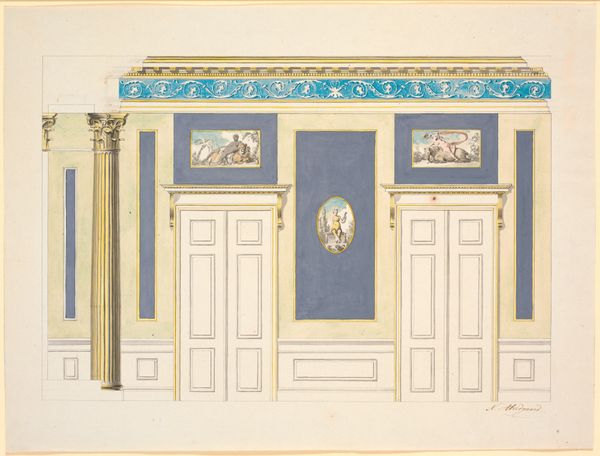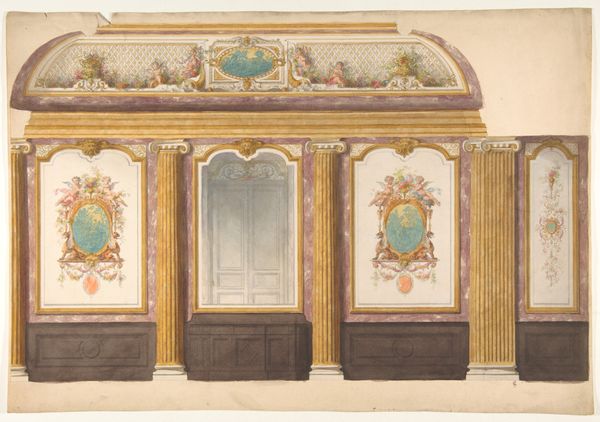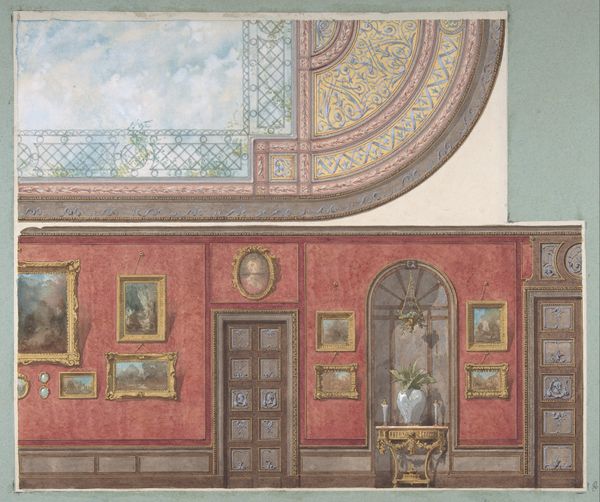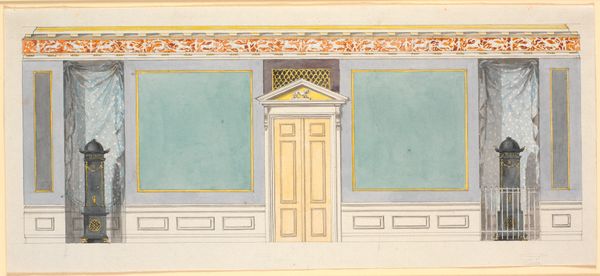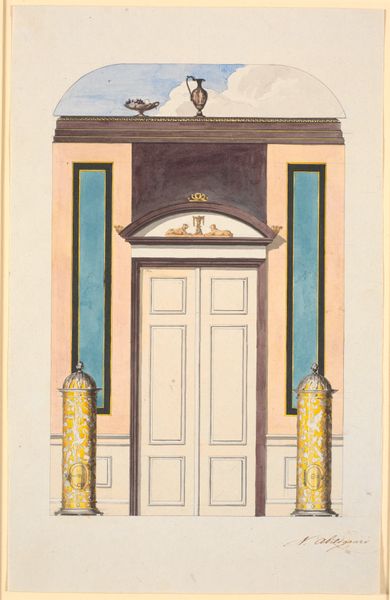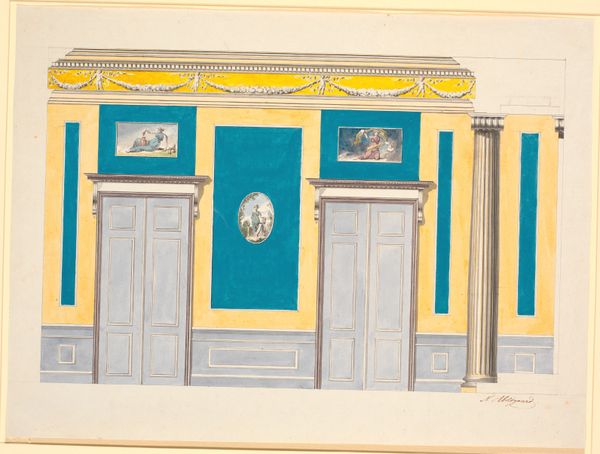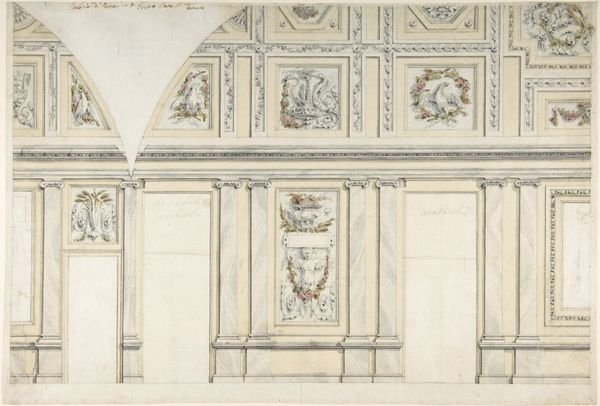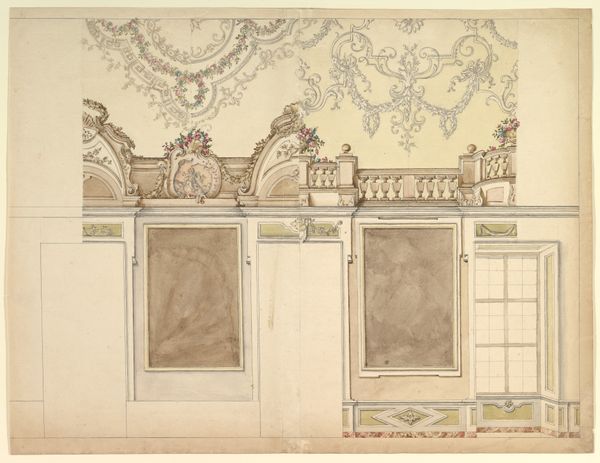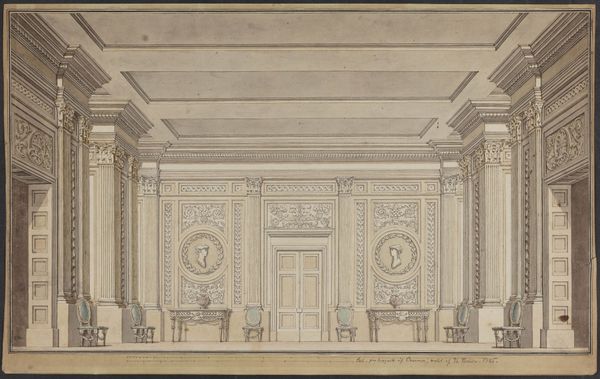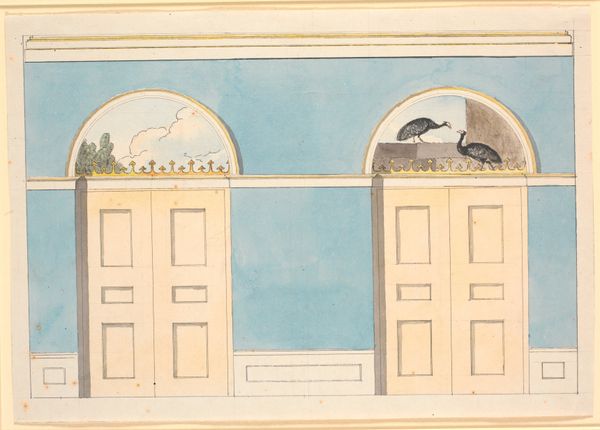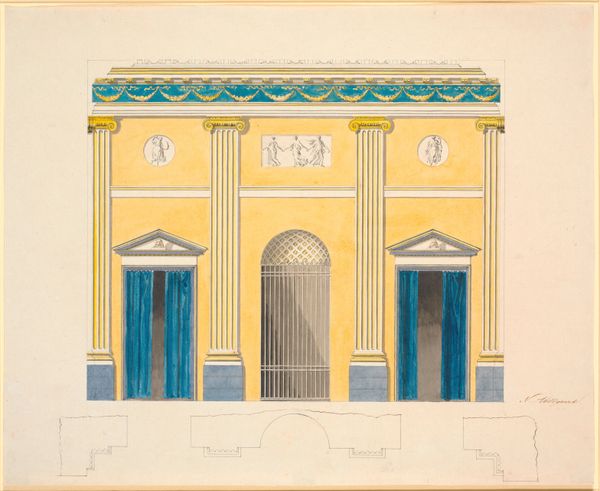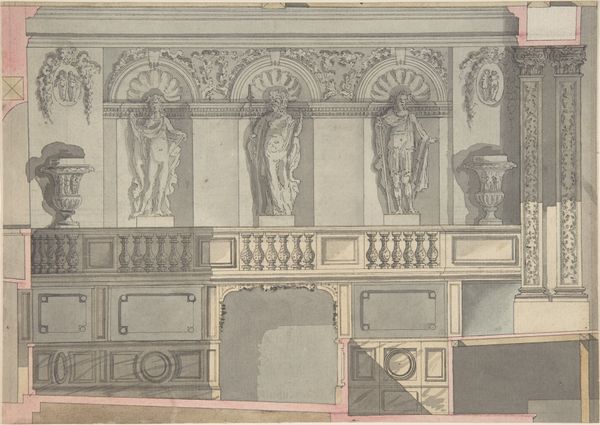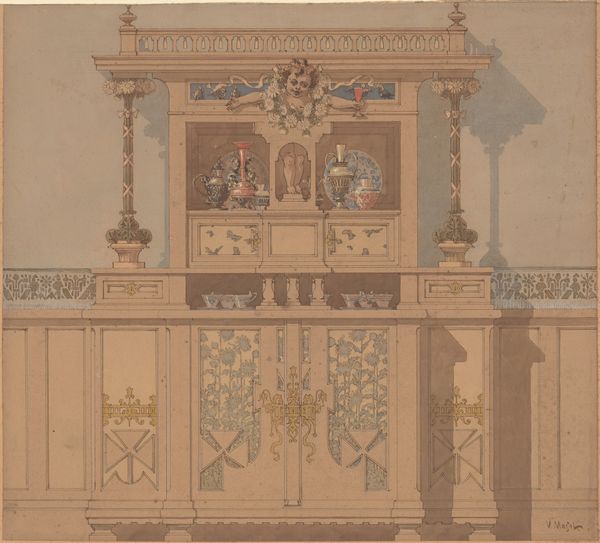
Den ene langvæg. Udkast til dekoration af audienssalen 1790s
0:00
0:00
drawing, watercolor, architecture
#
drawing
#
neoclacissism
#
landscape
#
watercolor
#
geometric
#
history-painting
#
architecture
Dimensions: 381 mm (height) x 514 mm (width) (bladmaal)
Curator: This watercolor drawing from the 1790s is titled "Den ene langvæg. Udkast til dekoration af audienssalen," or "One Long Wall: Design for the Decoration of the Audience Hall," and it comes to us from Nicolai Abildgaard. It resides at the SMK, the Statens Museum for Kunst. Editor: It’s giving me a very formal, almost austere vibe. The colors are muted, but then that turquoise ornamentation at the top—it feels quite grand, though reserved. Curator: Grand indeed. Notice how Abildgaard employs Neoclassical motifs: the fluted column, the rectangular panels, even the implied symmetry with the door and statue alcove. He’s clearly drawing on ancient Greek and Roman design principles, reflecting the Enlightenment ideals of order and reason. This order itself could symbolize the new authority the room means to imbue. Editor: Absolutely, and it's not just about replicating ancient forms, is it? It's about the careful selection of materials and colors. Look at the interplay between the blues and greens, possibly created with ground minerals; I am curious about how these hues would've been received at the time given the labor to produce such ornamentation and detail for what appears to be an audience hall. The gilded accents, would all communicate power and exclusivity in a setting such as the king's waiting hall. Curator: You touch upon an important point: Abildgaard infuses these spaces with symbolic content. The wall decor—do you read them as allegorical representations of royalty or virtue that build upon tradition, given their Greco-Roman thematic inclinations? I agree it underscores the occupant's place in a longer history. Editor: Precisely. And how the intended use shapes its aesthetic qualities and the choice of such durable material! It's not mere aesthetic appeal; the painting represents production itself. These historical depictions, are there any cues in what materials the images depict, which ones does he elevate, if any? It may be an early way of his commentary, through use of representation. Curator: Indeed, considering the function of this space within the court, those decorations would reinforce the idea of a just, wise, and divinely sanctioned ruler. Now, knowing this was never realized, perhaps we see how material realities – resources, the prevailing taste of the monarchy at the time – didn’t quite align with the artist's vision of embodying moral order and tradition through design? Editor: So, from our perspectives, the sketch remains a potent reflection of both the envisioned splendor and the material limitations of its time! Curator: Exactly! A dialogue frozen in a moment, between aesthetic aspirations and material circumstances.
Comments
No comments
Be the first to comment and join the conversation on the ultimate creative platform.
